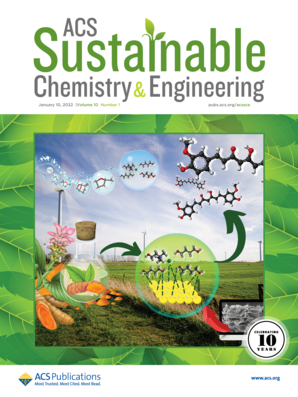Customizing Provincial Sustainable Manure Management Strategies for Small-, Medium-, and Large-Scale Cattle Farms in China
IF 7.1
1区 化学
Q1 CHEMISTRY, MULTIDISCIPLINARY
引用次数: 0
Abstract
Large-scale cattle farming currently accounts for only 30% of the industry in China, where significant variation in farm sizes and distributions poses challenges to sustainable manure management. Moreover, substantial gaps exist in research on the environmental impacts of manure treatment technologies across different farm scales. The environmental and economic performances of eight different cattle manure management techniques, including six aerobic, three anaerobic, and integrated methods, were evaluated for small, medium, and large cattle farms using life cycle assessment and life cycle cost methods. The results indicate that the black membrane biogas pool (BMBP) offers the best environmental and economic benefits, reducing the global warming potential (GWP) by 101.3% and enhancing the profit by at least 148.7 CNY per ton of dry cattle manure. Significant disparities in cattle farming scale and manure production across provinces necessitate region-specific policies. The GWP from national cattle manure management stands at about 1.3 million tons of CO2 equiv, with major inputs from Sichuan, Yunnan, and Inner Mongolia, comprising 25.2% of the total. Increasing the utilization rate of cattle manure from 80% to 90% by 2025 could reduce the GWP by 11.0%. Advancing the BMBP and shifting 5% of aerobic to anaerobic processes could reduce carbon emissions by 0.2 million tons of CO2 equiv and other pollutants by 1.1–23.4%. Therefore, enhancing anaerobic technology and boosting utilization rates promise more efficient and synergistic reductions in CO2 emissions and other pollutants.

为中国小、中、大型养牛场量身定制省级可持续粪污管理战略
目前,大规模养牛业仅占中国养牛业的 30%,养殖场规模和分布的巨大差异给可持续粪肥管理带来了挑战。此外,不同养殖规模的牛粪处理技术对环境影响的研究也存在很大差距。采用生命周期评估和生命周期成本法,对小型、中型和大型养牛场的八种不同牛粪处理技术(包括六种好氧法、三种厌氧法和综合法)的环境和经济效益进行了评估。结果表明,黑膜沼气池(BMBP)具有最佳的环境和经济效益,每吨干牛粪的全球升温潜能值(GWP)降低了 101.3%,利润至少增加了 148.7 元人民币。由于各省的养牛规模和牛粪产量存在显著差异,因此有必要制定针对具体地区的政策。全国牛粪管理产生的全球升温潜能值约为 130 万吨二氧化碳当量,主要来自四川、云南和内蒙古,占总量的 25.2%。到 2025 年,将牛粪利用率从 80% 提高到 90%,可使全球升温潜能值降低 11.0%。推进 BMBP,将 5%的好氧工艺转变为厌氧工艺,可减少 20 万吨二氧化碳当量的碳排放,并减少 1.1-23.4% 的其他污染物。因此,加强厌氧技术和提高利用率有望更有效地协同减少二氧化碳排放和其他污染物。
本文章由计算机程序翻译,如有差异,请以英文原文为准。
求助全文
约1分钟内获得全文
求助全文
来源期刊

ACS Sustainable Chemistry & Engineering
CHEMISTRY, MULTIDISCIPLINARY-ENGINEERING, CHEMICAL
CiteScore
13.80
自引率
4.80%
发文量
1470
审稿时长
1.7 months
期刊介绍:
ACS Sustainable Chemistry & Engineering is a prestigious weekly peer-reviewed scientific journal published by the American Chemical Society. Dedicated to advancing the principles of green chemistry and green engineering, it covers a wide array of research topics including green chemistry, green engineering, biomass, alternative energy, and life cycle assessment.
The journal welcomes submissions in various formats, including Letters, Articles, Features, and Perspectives (Reviews), that address the challenges of sustainability in the chemical enterprise and contribute to the advancement of sustainable practices. Join us in shaping the future of sustainable chemistry and engineering.
 求助内容:
求助内容: 应助结果提醒方式:
应助结果提醒方式:


